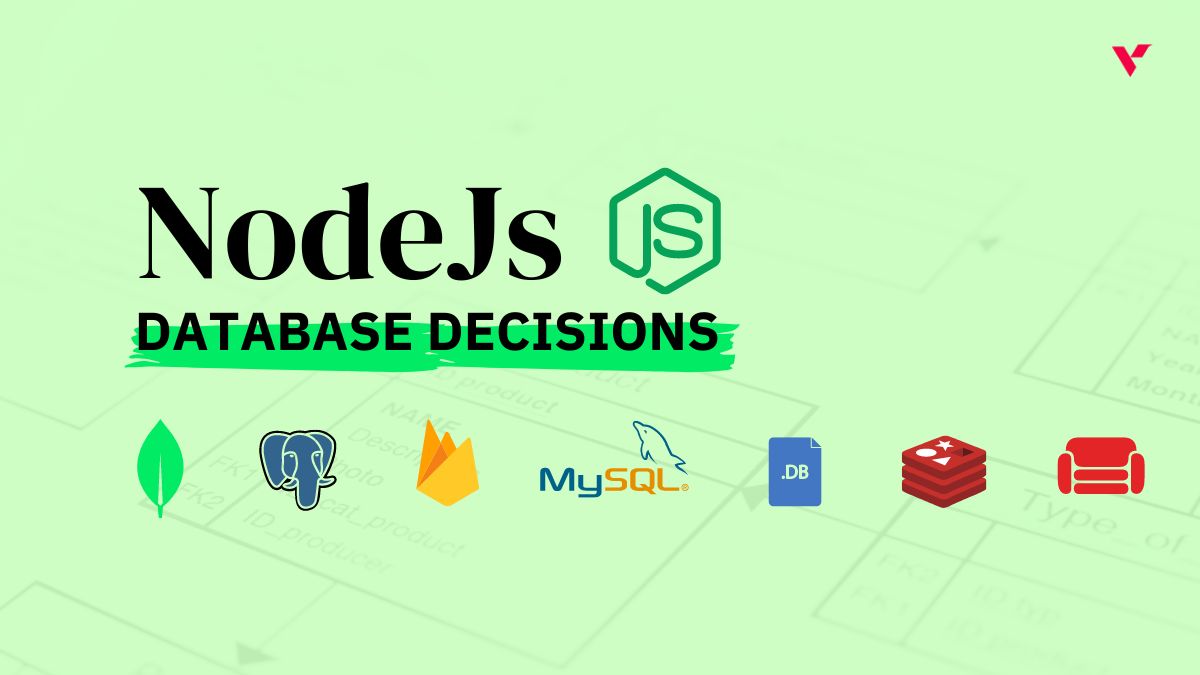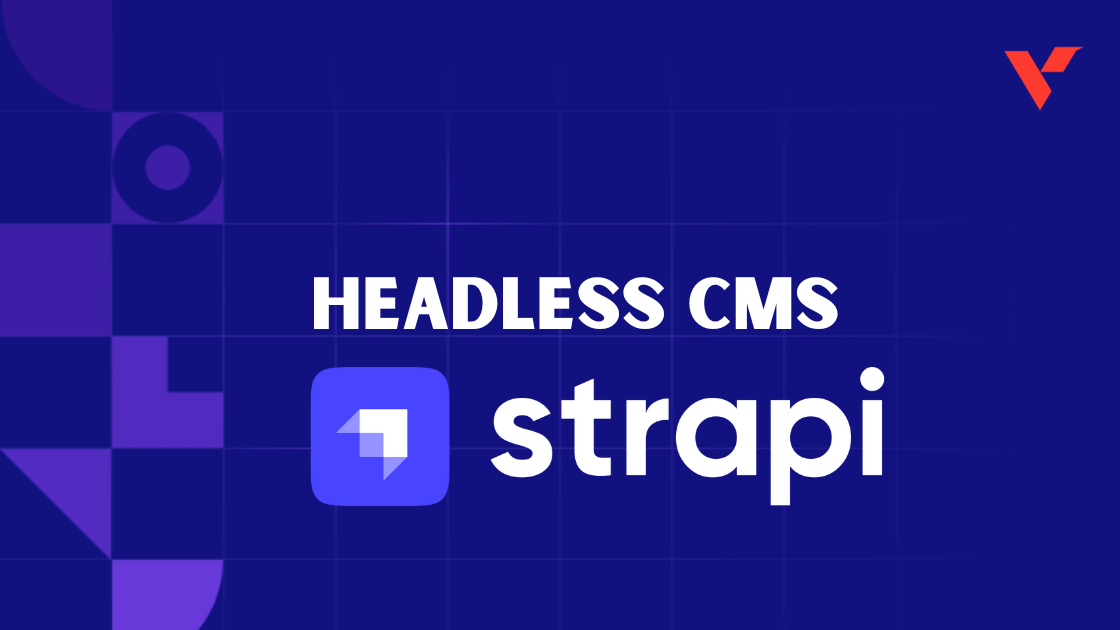Popular Tools by VOCSO
Google has made multiple changes to its search engine algorithm over the past few years.
Among those updates, Panda, Penguin, and Hummingbird stand tall.
These updates added guidelines for how site owners should set up their pages for link building, including creating incoming links and using anchor text for outbound connections.
However, on-page SEO has not changed much despite the tweaks. In reality, every on-page SEO task serves the user.
Google wants the user to enjoy their experience on your website. Google will only know that people are happy with your site if they spend time there. There are several on-page SEO tools available that can help you find all the missing things that are essential to fix.
When it comes to optimizing your website for search engines, on-page SEO is crucial. It involves making changes to your website’s content and HTML source code to improve its relevance and usability for both users and search engines.
In this article, we’ll provide you with a comprehensive guide to flawless on-page SEO, and show you how to outrank the competition.
Let’s get started!
Table of Contents
1. keyword research and optimization
The process of creating high-quality content starts with keyword research and selecting relevant topics based on keywords.
Therefore, you should conduct keyword research by typing phrases into Google to see what websites and competitors’ web pages come up with.
Additionally, you can also use keyword research tools such as Ahrefs, SEMrush, or UberSuggest.
Keyword optimization is an essential part of on-page SEO, as it helps to ensure that your content is relevant to the user’s search query. When optimizing your content for keywords, it’s important to avoid keyword stuffing, which is the practice of overusing keywords in your content to try to manipulate search engines. Instead, aim to use your keywords naturally and strategically throughout your content.
One of the best places to use your target keywords is in the title of your page or post. The title is one of the most important on-page SEO elements, and it should accurately reflect the content of the page while also incorporating your target keyword.
You should also include your target keyword in the URL of the page, as well as in the meta description, which is a brief summary of the page that appears in search engine results. The meta description should be compelling and encourage users to click through to your page.
Another way to optimize your content for keywords is to use semantically related words and phrases. These are words and phrases that are related to your target keyword but are not exact matches. Including these in your content can help to signal to search engines that your content is relevant to a particular topic.
Header tags (H1, H2, etc.) are another important element of on-page SEO, as they provide structure and context to your content. Including your target keyword in your H1 tag can help to signal to search engines what your page is about.
2. Avoid keyword stuff
The practice of utilizing specific phrases repeatedly in an effort to manipulate search engine rankings is known as “keyword stuffing.”
Although having relevant keywords in your content is crucial for SEO, overusing them can harm your website’s user experience and search engine rankings.
In the past, some website owners would stuff their content with as many keywords as possible, sometimes rendering the writing unintelligible or meaningless.
Search engines can now detect when content is being artfully modified in this way since they have advanced in sophistication.
Stuffing your website with keywords may result in penalties from search engines, harming your website’s exposure and ultimately your business. Focus on providing quality content instead than trying to artificially raise your ranks.
3. Make sure you’re implementing your keyword in URLs
Including your keyword in the URL of a website can be a useful search engine optimization tactic to enhance the visibility of your content in search engine results on pages.
While search engines like Google move slowly a website, they examine the URL of every page to get an idea of what the page is set.
By including a relevant keyword in the URL, you clearly indicate to engines like Google and customers that your page is ready.
This may make it simpler for your content to be discovered in seeking results while human beings try to find information associated with your keyword.
But, it is important to keep in mind that the URL is simply one factor that search engines like Google and yahoo remember while rating pages.
In reality, a keyword within the URL won’t assure that your web page will rank particularly in seek outcomes. You still want to ensure that your content is remarkable, informative, and relevant to your audience.
In addition, it is important to preserve your URLs short, descriptive, and smooth to study. This can help customers fast recognize what your page is set and encourage them to click through on your content material.
4. Write user-friendly content
After picking up target keywords for your site, it’s time to write your page content or revamp the old one.
Your text should be accessible and easy to read. That’s why writing user-friendly content is crucial for on-page SEO.
If your content is hard-to-read, it will go in vain, no matter how informative or authoritative it is.
So you should use simple language in your content. If you have used complex language in your old pages, it’s time to simplify that content.
How?
Replace all complicated words with simple synonyms and trim the long sentences.
However, if you struggle to simplify complex text, an online paraphrasing tool comes in handy for you.
A paraphrasing tool is based on Natural Language Processing (NLP) and supported by Artificial Intelligence (AI) that can help you simplify hard-to-read sentences.
The paraphrasing tool breaks down long sentences into short and sweet sentences that are easy to read and scan. In addition, it also simplifies difficult words by replacing them with easy synonyms.
In this way, readers will not have difficulty going through the content. In a nutshell, an online paraphraser can help you learn how to write reader-friendly content.
5. Focus on E-A-T
You are well familiar that content is still the king. Your all SEO efforts are useless if you’re not producing quality content for your users through your website service or product content and blogging content. Google ranks your site based on Expertise, Authoritative, and Trustworthiness (E-A-T).
Make sure you’re following the guide about Google E-A-T & SEO when creating content. So you should write content around these three factors.
6. Also, focus on E-E-A-T
Google change the (E-A-T) into (E-E-A-T) Experience, Expertise, Authoritativeness, and Trustworthiness, which are crucial components that search engines consider when assessing the caliber and authority of a website’s content.
Web designers can raise their website’s credibility with users and search engine exposure by concentrating on EEAT.
The level of knowledge and expertise displayed by a website’s content is referred to as expertise. The reputation and authority of the website or its content authors are indicators of authoritativeness.
The term “trustworthiness” relates to the validity and dependability of the website’s information as well as the website itself.
Website owners can enhance EEAT by producing excellent, educational content that is thoroughly researched and supported by reliable sources. With guest writing, link-building, and social media involvement, they can also concentrate on establishing their reputation and authority.
In addition, ensuring website security and providing clear contact information can help to establish trust with users.
By prioritizing EEAT in website development and content creation, website owners can improve their website’s search engine visibility, user engagement, and overall credibility
7. Use keywords naturally
It’s important to make sure that you understand the proper keyword usage strategies in order to increase the chance that your content will be found, indexed, and ranked by search engines.
You should include keywords naturally in your content. Where to use keywords?
You should use keywords in the page’s Meta title, description, heading, and subheadings. Moreover, you must also spread your keywords throughout the entire page.
Avoid keyword stuffing because it can hurt your search ranking. As a result, your content will incur Google penalties, and you will not be able to drive more conversions and leads for your business.
8. Include visuals in your content
Adding images, videos, and infographics to your website does more than just make it more appealing to the eye.
Additionally, it offers you chances to boost your SEO.
A report unveils that more than 36% of US consumers prefer visual search while making an online purchase.
So if you are not using photos, you are losing out on traffic.
Remember, your images’ size should not be too heavy. It will slow down the loading time. You can compress images to tackle this situation.
Make your images shareable to find backlinking chances that might raise your E-A-T.
9. Write a short but engaging Meta title
This small piece of code, which allows you to give a webpage a title, would not be enough to propel you to the top of SERPs.
However, when used with other on-page components (such as those covered above), it may help you provide context and show the relevance of your site.
Note: You should write a Meta title within 60 characters. Keep it short and sweet.
10. Craft a compelling Meta description
Meta descriptions can help a website appear in social media and search results, enticing users to go through and visit it.
Additionally, a Meta description can help Google and readers understand what your web page is about.
These are key recommendations:
- Use your target keyword in it
- Keep the character count at 155
- Make sure that it matches the page’s content
11. Optimize images
The significance of visuals for your website was briefly mentioned, but now it’s time to go further into their technical details.
Optimizing images involves reducing the file size of images without sacrificing quality, which can improve the loading speed of your website.
This can be achieved through techniques such as compressing images, reducing their dimensions, and choosing the appropriate file format.
Here are some suggestions to optimize images:
- Put in SEO-friendly alt tags.
- For quick loading, pick the proper file format and size.
- Use unique file names rather than generic ones like IMG_04567.
- Make sure your photographs are suitable for mobile use.
12. Image Alt-text
Image alt-text, also known as alt tags or alt attributes, is descriptive textual content that may be brought to pictures on a webpage.
Alt-textual content provides records about the content and context of a photograph, which may be beneficial for customers who’re visually impaired, in addition to search engine optimization.
While a picture fails to load on a website, the alt-text appears in the area of the photo, permitting customers to apprehend the content material of the image even without being able to see it.
Additionally, engines like Google use alt-text to recognize the content material of photos and to include them in photo seek outcomes.
Which includes relevant keywords for your alt-text and also can be a useful search engine optimization tactic to assist your content rank better in search results.
However, it is crucial to make certain that your alt-textual content accurately displays the content of the image and doesn’t simply consist of inappropriate or spammy keywords.
By adding alt-textual content to your photos, you could enhance the accessibility and SEO of your internet site, making it easier for each user and search engines like Google to recognize the content material of your pages.
13. Internal linking
The practice of internal linking is done on the same website. This tactic can help search engines understand the structure and hierarchy of the website, as well as improve the visibility and accessibility of website content.
Users are provided with additional resources and information when you link to other pages on your website. Internal linking can improve the rankings of your pages in search results by distributing link equity throughout your website.
Ensuring that your links are relevant, descriptive, and easy to understand is important to effectively use internal linking.
Anchor text, which is the clickable text in a hyperlink, can be used to provide additional context and information.
Search engines can improve their crawl ability by understanding the relationships between your pages and by organizing your website into a logical hierarchy.
14. Mobile friendly
Mobile-friendliness is a crucial element of on-page SEO. It refers to the ability of a website to be properly displayed and navigated on a mobile device, such as a smartphone or a tablet. With the increasing use of mobile devices to browse the internet, having a mobile-friendly website has become even more important.
According to a recent study by Statista, mobile devices accounted for more than half of all internet traffic worldwide in 2021. This means that a significant percentage of potential website visitors will be accessing your site from a mobile device. If your website is not mobile-friendly, users may struggle to navigate it, which can lead to a poor user experience and result in higher bounce rates.
To ensure that your website is mobile-friendly, there are several things you can do. Firstly, make sure that your website is optimized for smaller screens. This means that your content should be easily readable on a mobile device and your website should load quickly. You can achieve this by reducing image sizes, optimizing your code, and using a responsive design that adjusts to different screen sizes.
Another key factor in mobile-friendliness is touch screen optimization. Mobile devices rely on touch screens to navigate, so it’s important to ensure that your website is optimized for touch screen use. This means making sure that buttons are large enough and spaced apart enough to be easily clicked on with a finger.
Google also places a high priority on mobile-friendliness, and it’s a key factor in its search ranking algorithm. In fact, Google has a mobile-friendly test that you can use to determine if your website meets its mobile-friendliness standards. Websites that pass the test are more likely to rank higher in mobile search results, which can lead to increased traffic and visibility.
In addition to the technical aspects of mobile-friendliness, there are also user experience considerations. For example, if you have a form on your website, it’s important to ensure that it’s easy to fill out on a mobile device. This can be achieved by using larger text boxes and reducing the number of required fields.
Mobile-friendliness is a crucial aspect of on-page SEO. With more and more people using mobile devices to browse the internet, having a mobile-friendly website is essential for providing a good user experience and improving your search rankings. By optimizing your website for smaller screens, touchscreen navigation, and user experience, you can ensure that your website is accessible to a wider audience and ranks well in mobile search results.
15. Site speed
A slow-loading website can really lower your search score. Your site should have a fair speed if you want to stick readers to your site. A slow-loading internet site can lead to annoyed users, high soar prices, and lower search engine rankings.
To improve website speed, web developers can take numerous steps, including optimizing photos, minifying code, reducing server response time, and allowing browser caching. Further, the use of a content transport community (CDN) or upgrading hosting offerings can help to improve web page pace.
A quicker-loading website can result in expanded personal engagement, higher conversion rates, and stepped-forward search engine visibility, making it a crucial element of internet site optimization.
So site’s page speed is a ranking factor. Therefore, you should take this step into account.
As working with a web design agency, I know speed optimization is a technical phase and you’ll need an expert to do this for you. If you don’t have any expertise then I would recommend you look for a speed optimization services provider.
16. Robots.txt
Robots.txt is a file that is placed in the root directory of your website to instruct search engine bots which pages they should and should not crawl. By using a robots.txt file, you can prevent bots from crawling pages that are irrelevant, low-quality, or duplicate content.
However, it is important to use robots.txt carefully as it can also prevent search engine bots from crawling important pages on your website. Always double-check your robots.txt file to ensure that you are not accidentally blocking any important pages.
17. Sitemaps
A sitemap is a file that contains a list of all the pages on your website. By submitting a sitemap to search engines, you can help them to discover and index your content more easily. This can improve your search engine rankings and make it easier for users to find the content they are looking for.
There are several tools available that can help you to generate a sitemap for your website. Once you have created a sitemap, you can submit it to search engines via their respective webmaster tools.
18. Manage the user experience
One of the most important factors in on-page SEO is the user experience. Google and other search engines prioritize websites that provide a positive user experience, as this is a key factor in retaining visitors and driving traffic to your site.
To optimize the user experience, make sure your website is easy to navigate and has a clear and intuitive layout. Use high-quality images and other media to make the content more engaging, and make sure your site is optimized for mobile devices.
19. Using Search Console
Google Search Console is one of the most powerful SEO tools that can help you to monitor and optimize your on-page SEO. It provides valuable insights into how search engines are crawling and indexing your site, as well as identifying any issues that may be impacting your rankings.
Using Search Console, you can track your search engine rankings, identify crawl errors, and see which keywords are driving traffic to your site. You can also use Search Console to submit sitemaps and monitor the performance of your website in search results.
20. Canonicalization
Canonicalization is the process of consolidating multiple URLs that refer to the same content into a single, preferred URL. This is important for on-page SEO because search engines may see multiple URLs as duplicate content, which can negatively impact rankings.
For example, imagine that you have a blog post on your website that has several different URLs. Perhaps the original URL was something like https://example.com/blog/my-blog-post, but you later decided to change the URL to https://example.com/blog/my-awesome-blog-post. If the original URL still exists and is accessible, both URLs could show up in search results, potentially diluting the authority and relevance of your content.
To prevent this from happening, you would want to use a canonical tag on the duplicate URL that points to the preferred URL. The canonical tag is an HTML element that tells search engines which URL should be considered the primary URL for a piece of content. In the example above, the canonical tag would be placed on the duplicate URL (https://example.com/blog/my-blog-post) and point to the preferred URL (https://example.com/blog/my-awesome-blog-post).
The canonical tag looks like this:
<link rel="canonical" href="https://example.com/blog/my-awesome-blog-post" />
21. Content Length
When search engines crawl your website and find the canonical tag, they will know to treat the preferred URL as the primary URL for that content. This can help to consolidate the authority and relevance of your content in search results, leading to better rankings.
It’s important to note that canonicalization should be used sparingly and only when it’s necessary to consolidate multiple URLs that refer to the same content. If you have multiple URLs for different pages on your site, each URL should have unique content and should not be canonicalized to another URL.
In today’s digital age, it’s not just important to have good quality content on your website, but also to have enough of it. Google rewards websites that provide in-depth, comprehensive content that is valuable to the reader.
The length of your content is a crucial factor in determining its effectiveness. Longer content is considered more authoritative and in-depth, and therefore, has a better chance of ranking higher in search results. However, simply adding more words to your content won’t help if it doesn’t provide any value or answer the user’s query.
It’s recommended that your content should have at least 1000 words to be considered valuable. However, in-depth blog posts and articles should aim for 1500-2500 words or more to provide comprehensive information to the reader. This does not mean that you should compromise on quality for the sake of length. Your content should be engaging, informative and well-researched, and should add value to the user experience.
Content length will also depend on the topics that you’re going to write about. If you’re writing for a product description or a term definition then there is no need to write 1000 or 2000 words. You can also describe them in 500 words.
22. Readability
Readability is a crucial aspect of on-page SEO that can significantly impact the user experience and engagement on a website. It refers to how easy it is for users to read and comprehend the content on a page. If the content is difficult to read, users are more likely to leave the site, resulting in a high bounce rate and low dwell time, both of which can negatively impact search engine rankings.
One way to measure readability is through the use of the Flesch-Kincaid Grade Level test, which calculates the reading level required to understand the content. The formula takes into account the number of syllables, words, and sentences in a piece of text. The resulting score represents the grade level required to understand the content. A lower score indicates that the content is easier to read, while a higher score indicates that the content is more difficult to read.
For example, a score of 8 means that an eighth-grader can understand the content, while a score of 12 means that the content requires a college-level reading ability. Generally, it’s recommended to aim for a score of 8-9 for most web content.
Another readability tool that is commonly used is the Flesch Reading Ease test. This test calculates the ease of reading a text and provides a score on a scale of 0-100. A higher score indicates that the content is easier to read, while a lower score indicates that the content is more difficult to read. The ideal score for web content is between 60-70.
To improve the readability of your content, you can follow some best practices such as:
- Use shorter sentences and paragraphs
- Use simple and familiar words
- Use subheadings to break up the content into smaller sections
- Use bullet points and numbered lists to present information in a concise and easy-to-understand format
- Use active voice instead of passive voice
- Avoid using jargon or technical terms that may be unfamiliar to the audience
- Use a font size and style that is easy to read, such as Arial or Verdana.
By focusing on improving readability, you can ensure that your content is more engaging and accessible to your target audience, resulting in improved user experience, longer dwell times, and ultimately, better search engine rankings.
22. Duplicate Content
Duplicate content is one of the most common issues that webmasters face when it comes to on-page SEO. Duplicate content refers to content that appears on multiple pages within the same website or on different websites. It can also refer to content that is similar but not identical, such as pages that have been generated dynamically by a website’s content management system.
The issue with duplicate content is that it can confuse search engines and lead to a lower ranking for both versions of the content. Google’s algorithms are designed to identify and prioritize original, high-quality content, and duplicate content can be seen as a spammy attempt to manipulate search results. If you’re ignoring duplicate content issues then you’re doing one of the biggest SEO mistakes and your website or pages can be penalized by Google.
To avoid being penalized for duplicate content, it’s important to identify and address any instances of it on your website. This can be done by conducting regular audits of your site’s content and using tools such as Copyscape to check for plagiarism and duplication.
Examples of duplicate content include:
- Multiple pages on the same website with identical or similar content.
- Syndicated content that appears on multiple websites without proper attribution or canonical tags.
- E-commerce websites with product descriptions that are identical to those on other websites or that have been provided by the manufacturer.
- Content that has been translated from one language to another without proper localization, results in pages with nearly identical content.
23. Crawlability
According to a study by Raven Tools, about 29% of web pages contain duplicate content, which can lead to a drop in search engine rankings. Therefore, it’s essential to address any instances of duplicate content on your website and ensure that your content is original, high-quality, and valuable to your target audience. Managing good indexing and crawlability score is one of the major technical SEO factors that can enhance your rankings.
Crawlability refers to how easily search engine crawlers can navigate through your website and understand the content. It is important to ensure that all of your website pages are crawlable so that they can be indexed by search engines. There are several ways to improve crawlability:
XML sitemaps: Sitemaps help search engines understand the structure of your website and its content. XML sitemaps include a list of all the pages on your website and can be submitted to search engines to help them crawl your site more efficiently.
Navigation: A clear and concise navigation structure is important for both users and search engines. Ensure that your navigation menu is easily accessible and that it includes links to all important pages on your site.
Internal linking: Internal links help search engines understand the structure of your website and the relationship between your pages. Make sure to include internal links within your content, and use descriptive anchor text to help search engines understand what the linked page is about.
Featured snippets
Featured snippets, also known as “position zero” or “rich snippets,” are a type of search result that appears at the top of Google’s search engine results page (SERP). They provide a concise summary of the answer to a user’s query and are designed to give users the information they need quickly and easily.
Featured snippets are displayed in a box format and typically include a title, URL, and a short summary of the content that provides the answer to the user’s query. They can appear for a wide range of queries, including definitions, recipes, product reviews, and more.
Here are a few examples of featured snippets:
- Definition: If a user searches for “what is SEO,” the featured snippet will display a brief definition of search engine optimization.
- Recipe: If a user searches for “how to make pizza dough,” the featured snippet will provide a summarized recipe for making pizza dough.
- Product review: If a user searches for “iPhone 12 review,” the featured snippet will provide a summarized review of the iPhone 12.
Featured snippets can have a significant impact on website traffic and visibility, as they appear at the top of the SERP and can attract more clicks than regular search results. According to a study by Ahrefs, featured snippets get clicked on 8.6% of the time, while the first organic search result gets clicked 19.6% of the time.
In addition, featured snippets can also help establish a website as an authority in a particular field or industry. By providing high-quality, relevant content that answers users’ queries in a concise and easy-to-understand way, websites can increase their chances of appearing in featured snippets and driving more traffic to their sites.
Title tags and meta descriptions
Conclusion
On-page SEO is an essential component of any successful SEO strategy. By optimizing your website’s on-page elements for target keywords and providing high-quality, original, and relevant content, you can improve your website’s visibility in search results and outrank your competition. We hope this comprehensive guide to on-page SEO factors has been helpful in improving your website’s search engine optimization efforts.


















